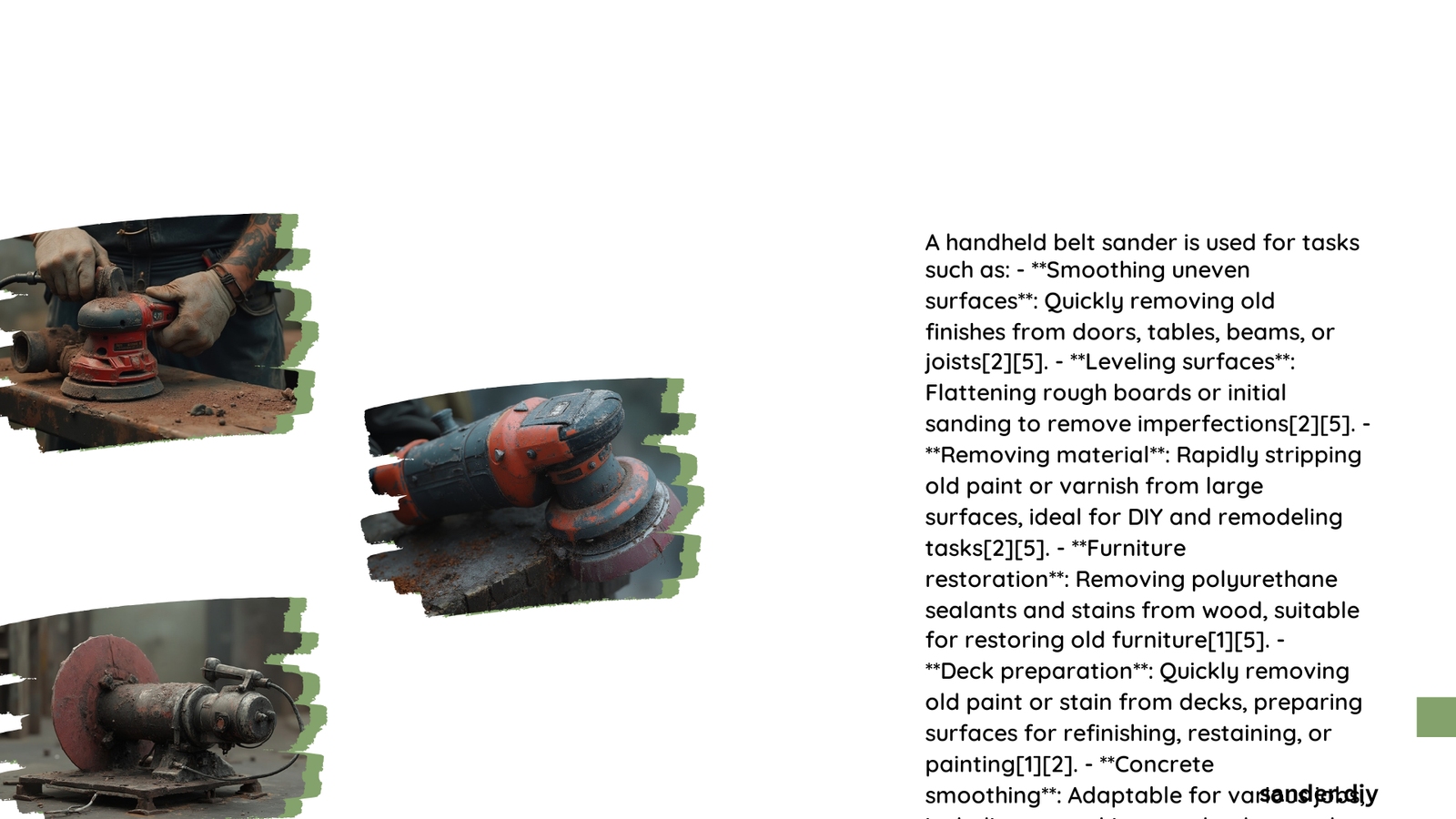Hand held belt sanders are versatile power tools used primarily in woodworking and furniture refinishing. They excel at quickly removing material from large surfaces, smoothing rough wood, and leveling uneven areas. These sanders are also useful for stripping old finishes, shaping wood, and even some metal finishing tasks. Their portability and power make them indispensable for both DIY enthusiasts and professional woodworkers.
What Are the Primary Uses of Hand Held Belt Sanders in Woodworking?
Hand held belt sanders are workhorses in the woodworking shop, offering a range of applications:
- Rapid Material Removal: Quickly strip away old finishes or remove large amounts of wood.
- Surface Smoothing: Flatten rough boards or smooth out imperfections.
- Edge Shaping: Bevel or round edges on boards and panels.
- Leveling: Even out uneven surfaces or joints.
Techniques for Effective Woodworking with Belt Sanders
- Always sand with the grain to avoid damaging the wood.
- Use multiple passes, overlapping each by about half the sander width.
- Apply gentle pressure; let the sander’s weight do the work.
- Start with coarse grits (40-80) for heavy removal, then progress to finer grits (120-220) for smoothing.
How Can Hand Held Belt Sanders Be Used for Metal Finishing?

While primarily designed for wood, belt sanders can tackle some metal finishing tasks:
- Removing Rust: Strip away surface rust from metal objects.
- Smoothing Welds: Level and smooth welded joints.
- Polishing: With the right belts, achieve a polished finish on metal surfaces.
Safety Precautions for Metal Sanding
- Use belts specifically designed for metal.
- Be aware of spark generation and ensure a clean, fire-safe work area.
- Wear appropriate personal protective equipment (PPE).
What Are the Best Practices for Furniture Refinishing with Belt Sanders?
Belt sanders are invaluable for furniture restoration:
- Stripping Old Finishes: Quickly remove old paint, varnish, or stains.
- Leveling Surfaces: Smooth out dents, scratches, or uneven areas.
- Preparing for New Finishes: Create a smooth base for applying new stains or paints.
Step-by-Step Guide for Furniture Refinishing
- Start with a coarse grit (40-60) to remove old finishes and level the surface.
- Progress through medium grits (80-120) to smooth out scratches.
- Finish with fine grits (150-220) for a smooth surface ready for new finishes.
What Specifications Should I Look for When Choosing a Hand Held Belt Sander?
Consider these factors when selecting a belt sander:
- Power: Look for models with 6-10 amps for most tasks.
- Belt Size: 3×21 inches is standard and versatile.
- Speed Control: Variable speed offers more control for different materials.
- Dust Collection: Efficient dust collection systems keep your workspace clean.
Comparison Table of Belt Sander Features
| Feature | Entry-Level | Mid-Range | Professional |
|---|---|---|---|
| Power | 6-7 amps | 8-9 amps | 10+ amps |
| Speed Control | Fixed | Variable | Variable |
| Dust Collection | Bag | Bag/Vacuum Port | Advanced Systems |
| Weight | 8-10 lbs | 10-12 lbs | 12+ lbs |
How Do I Maintain My Hand Held Belt Sander for Longevity?
Proper maintenance ensures your belt sander’s performance and lifespan:
- Clean after each use, removing dust and debris.
- Check and replace worn belts promptly.
- Lubricate moving parts as recommended by the manufacturer.
- Store in a dry place to prevent rust and damage.
Troubleshooting Common Belt Sander Issues
- Belt Tracking Problems: Adjust the tracking mechanism to center the belt.
- Excessive Vibration: Check for worn bearings or an unbalanced belt.
- Poor Sanding Performance: Ensure you’re using the correct grit and a sharp, undamaged belt.
By understanding these various aspects of hand held belt sander uses, you can maximize the tool’s potential in your woodworking, metal finishing, and furniture restoration projects. Remember to always prioritize safety and proper technique for the best results.
References:
1. How to Use a Belt Sander – Bob Vila
2. Tool test: Belt sanders for woodworkers – Fine Woodworking
3. What are belt sanders used for? – Benchmark Abrasives
